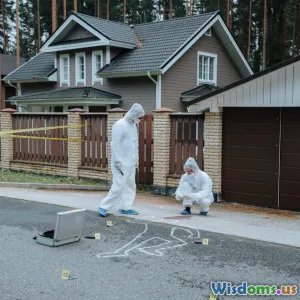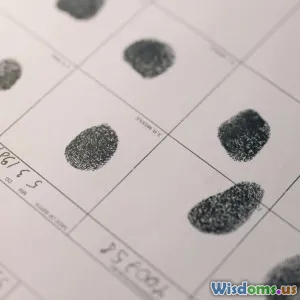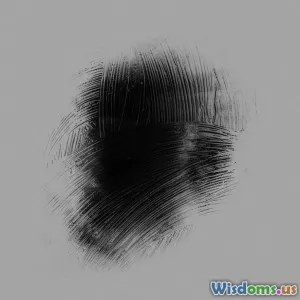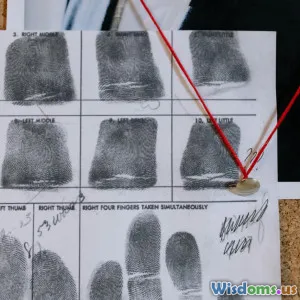
Seven Forensic Techniques Every Detective Uses in Homicide Cases
8 min read Explore seven crucial forensic techniques detectives rely on to crack homicide cases, from DNA analysis to digital forensics. (0 Reviews)
Seven Forensic Techniques Every Detective Uses in Homicide Cases
When a life is senselessly taken, the clock starts ticking for detectives to uncover the truth. Behind every solved homicide case lies a blend of meticulous police work and advanced forensic science. Detectives rely on a set of proven forensic techniques to sift through complex clues, bringing justice to victims and closure to families. In this article, we delve into the seven core forensic techniques that form the backbone of homicide investigations — tools that have revolutionized crime-solving across the globe.
1. DNA Analysis: The Genetic Fingerprint of Justice
One of the most revolutionary forensic methods, DNA analysis, can trace a perpetrator or victim with astounding precision. Every human’s DNA is unique, making it an irrefutable identifier.
In homicide cases, detectives collect biological evidence such as blood, hair, skin cells, or bodily fluids from the crime scene or victim.
For instance, the 1986 conviction of serial killer Richard Ramirez was bolstered by DNA evidence linking him to one of the crime scenes. DNA's reliability stems from the Polymerase Chain Reaction (PCR) process, which amplifies minute samples for testing.
Beyond identifying suspects, DNA also helps exonerate the innocent. The Innocence Project attributes over 375 post-conviction exonerations to DNA evidence.
2. Fingerprint Analysis: The Classic Trail
Fingerprints have been a cornerstone of forensic science for over a century. Their uniqueness and permanence make them a vital tool.
Detectives dust surfaces for latent prints invisible to the naked eye using powders, chemicals, or alternative light sources. These prints are then compared against databases like AFIS (Automated Fingerprint Identification System).
For example, the apprehension of serial killer Ted Bundy included fingerprint matches taken from various crime scenes, cementing his guilt.
Emerging technologies such as 3D fingerprint capturing and improved algorithms have enhanced the accuracy and speed of fingerprint identification.
3. Ballistics: Decoding the Language of Bullets
In homicide cases involving firearms, ballistics analysis is critical. This forensic technique examines bullets, cartridge casings, and firearms to establish connections.
Each gun barrel leaves unique markings (rifling) on a bullet, acting like a firearm’s fingerprint.
Investigators use comparison microscopes to match bullets recovered from victims or crime scenes to suspect weapons.
A landmark case is the investigation of the assassination of President John F. Kennedy, where ballistics reports played an essential role in forensic evaluation.
Additionally, gunshot residue analysis helps determine firing distances and whether a suspect recently discharged a firearm.
4. Digital Forensics: Cracking Cyber and Electronic Clues
With the rise of technology, digital forensics has become indispensable in homicide investigations. Detectives examine computers, smartphones, surveillance footage, and online activity.
Recovered deleted data or geolocation records can establish suspects’ whereabouts and motives.
The 2018 murder investigation of Mollie Tibbetts was aided through analysis of digital footprints alongside traditional evidence.
Cyber forensic experts also help detect communication patterns in conspiracies or track social media activities that may hint at crimes.
As technology advances, so do encrypted data extraction and forensic tools, keeping pace with criminals’ digital footprints.
5. Toxicology: Unveiling Invisible Killers
Toxicology examines bodily fluids and tissues to detect poisons, drugs, or alcohol that may have caused or contributed to death.
Postmortem toxicology often uncovers subtle causes that aren’t apparent externally, such as carbon monoxide poisoning or overdose.
Detectives look for classic toxin traces—for instance, the detection of arsenic in the death of Georgi Markov, a famous poisoning case during the Cold War.
Toxicology results direct investigations toward potential suspects, like pharmacists or caretakers, and help establish timelines.
6. Bloodstain Pattern Analysis: Reading the Canvas of a Crime
Blood is seldom a random smear at a homicide scene. Bloodstain pattern analysis (BPA) interprets the shapes, sizes, and distributions of blood splatters to reconstruct events.
Different patterns signify different actions: arterial spurts, cast-off stains from weapons, or passive drops.
In 1993, BPA was key evidence in the O. J. Simpson trial, helping the jury understand the sequence of events.
Though BPA requires expert interpretation, it paints a dynamic picture that often aligns contradicting witness statements.
7. Forensic Anthropology: Unlocking Secrets from Bones
When decomposed or skeletal remains are found, forensic anthropologists step in to identify victims and determine cause of death.
These experts analyze bone trauma, anomalies, and tissue loss to reconstruct the crime timeline.
The discovery of the remains of a presumed missing person, such as in cold cases, often relies on this technique.
One compelling example is the identification of the “Lady of Guadalupe” in Mexico through cranial analysis, decades after disappearance.
Forensic anthropology bridges gaps when traditional methods fail, offering critical insights in difficult homicide investigations.
Conclusion: The Synergy of Forensic Science and Detective Work
Homicide investigations are high-stakes puzzles where each forensic technique adds a piece to the bigger picture. From the unparalleled specificity of DNA and fingerprints to the storytelling power of bloodstains and digital traces, these seven techniques embody the relentless quest for truth.
Detectives artfully combine science with investigation skills to transform evidence into compelling narratives that hold perpetrators accountable. With ongoing advancements—like AI-enhanced pattern recognition and improved chemical analysis—the future promises even sharper forensic tools to combat violent crime.
Understanding these forensic pillars not only enriches public knowledge but inspires confidence in the criminal justice system’s ability to resolve even the most complex cases.
—
For justice to prevail in homicide cases, forensic science remains detectives’ most powerful ally.
Rate the Post
User Reviews
Popular Posts















